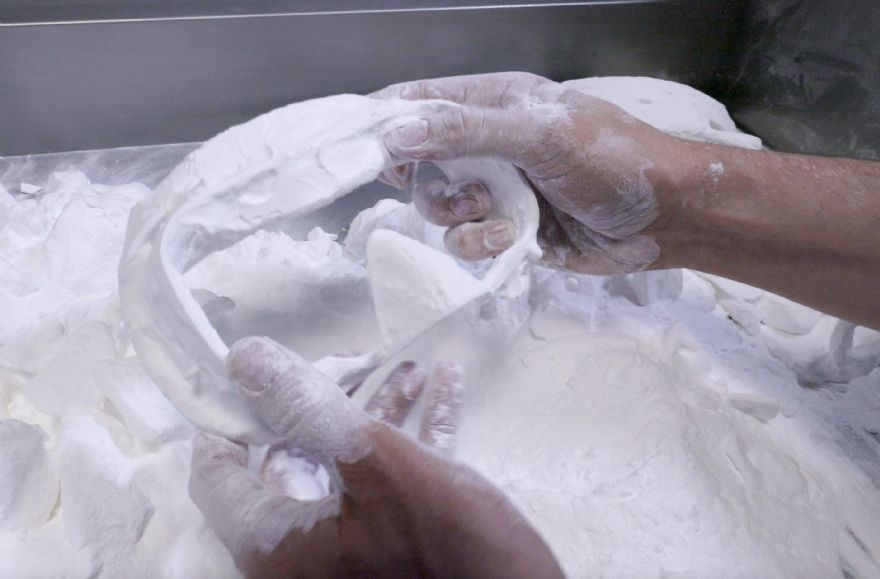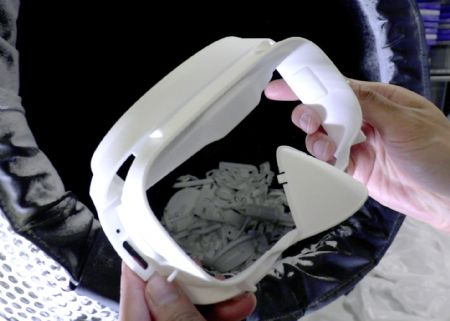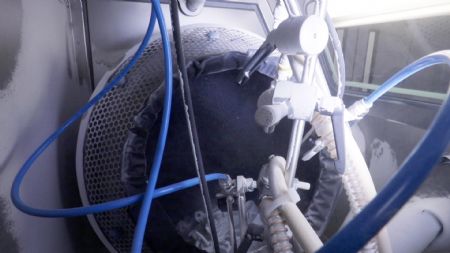
London-based
3DPrintUK — a specialist in low-volume production using powder bed fusion (PBF) 3-D printing systems with polymer materials — bridges ‘the void’ between prototyping and injection moulding.
Nick Allen, the company’s managing director, says for those applications that do not require the volume demanded by injection moulding and cannot justify the associated tooling costs, 3DPrintUK can provide a high-quality cost-effective and fast solution.
“We have mastered the process of 3-D printing with polymer powders, with no need for support material, virtually no layer lines and short turnround times, whether producing one-off prototypes or production runs of tens of thousands of parts — all while taking advantage of the fact that 3-D printing can produce complex parts, in one piece and economically. Moreover, 3-D printing can produce parts across a range of applications that are not only stronger and lighter but also use less material.
“However, industrial 3-D printing machines are just one part of an extensive ecosystem of technologies, and to focus purely on the 3-D printing build process means that a crucial part of the production process chain is overlooked — that of the post-processing steps once the parts are removed from the 3-D printing machine; and while the starting point is selecting a 3-D printing process that builds parts that match the requirements of the application, material, part geometry and function, part size and the numbers of parts required, consideration must be given to the post-processing requirements.”

Mr Allen says manufacturers need to understand that following a PBF 3-D printing processes there are necessary primary post-processing steps; and while these include de-powdering and cleaning the parts, there are also secondary post-processing steps that can provide additional benefits such as improved aesthetics, enhanced surface characteristics and/or superior mechanical capabilities.
“In a nutshell, once the build is complete on a polymer PBF 3-D printing system, the parts must go through the post-build process of removing and cleaning off the unfused powder; and while traditionally this has been a manual process using an air blaster, there are now automated solutions for this process.
“We used to remove unfused powder by hand with an air blaster, which took on average 1.5hr per build. Now, with Powershot C systems from DyeMansion it takes an average of 8min per cycle to
remove the powder and clean the parts. However, when the parts come out of the Powershot C they have a ‘natural surface finish’ that is generally considered ‘rough’ when compared with injection moulding and/or resin-based 3-D printing processes, which is why the option of further post processing may be required for some applications.”
Finishing optionsMr Allen continued: “The processes available include: vibro polishing; shot peening, also called bead blasting; chemical polishing; dyeing/colouring; painting/texturing; electroplating; and machining. The first four of these processes listed have automated solutions on the market and can be applied to high-volume parts; the last three processes are very much bespoke processes that are labour intensive and not particularly suitable for volume production.
“At 3DPrintUK, our focus is on parts for batch production, which is why we are implementing automated solutions for post processing. That said, it must be appreciated that 3-D printed parts present a whole set of unique challenges when looking at mass finishing, particularly as one huge advantage of 3-D printing as a production tool — namely its ability to manufacture highly complex geometries — has traditionally made polishing difficult.
The requirement for automated solutions was obvious, and over the last few years efforts on finding such solutions has increased, along with making them commercially viable.”
Mr Allen says that while ‘standard mass finishing’ options are designed very much for parts produced by ‘traditional manufacturing processes’, there is a ‘pincer movement’ at work to ensure the viability of 3-D printing as a production technology.
“On one side, developers of 3-D printing platforms are constantly refining processes to reduce the surface roughness of 3-D printed parts; on the other side, post processing companies are innovating and adapting mass finishing technologies to better cater for 3-D printed parts, with a focus on adaptations that allow for the post processing of parts with extremely complex geometries.

“This pincer movement is eroding the cost and time that is required to post process 3-D printed parts, and by so doing will provide surface characteristics that rival those produced by legacy plastic manufacturing processes such as injection moulding — and at a more competitive cost.
“In other words, the objective is to allow the manufacture of near-net-shape parts with
optimum surface characteristics without compromising part integrity. When this is achieved, the viability of 3-D printing as a production alternative will be recognised by a growing number of companies, and the technology will be in a better position to disrupt the traditional production paradigm.”
Design for post processingMr Allen also highlights the fact that various parameters can affect the efficiency of post processing operations for 3-D printed parts, which is why such operations should be considered early in the design stage, particularly as powder removal can be particularly onerous when processing parts with complex designs, deep holes or channels.
“Understanding the causes of post-processing difficulties and applying mitigating design features can eliminate the issues, as we recently demonstrated to a customer that manufactures sensors and required an array of small sensor parts — some 10,000-off — that needed to be of injection-moulding quality. We were given some test pieces to be printed and post processed.
“The parts were small, round, about 4cm in diameter and had a 1mm hole running all the way through. In terms of function and finish the parts are a perfect fit for batch production with polymer PBF. However, the nature of the original design meant that there were issues with powder removal from the hole, but by working with the 3DPrintUK team, this company has now been able to optimise the design of the part in a way that the hole will remain clear. This involved making changes to draft angles and the shape of the bore itself.
“When assessing mass finishing technologies, it is important to understand whether the processes are simply legacy ones that have been applied to 3-D printing, or whether the processes have been adapted to the vagaries of this technology. There are now cost-effective post-processing solutions available that offer the 3-D printing sector the same advantages as traditional manufacturing, by reducing price per part for higher volumes.”